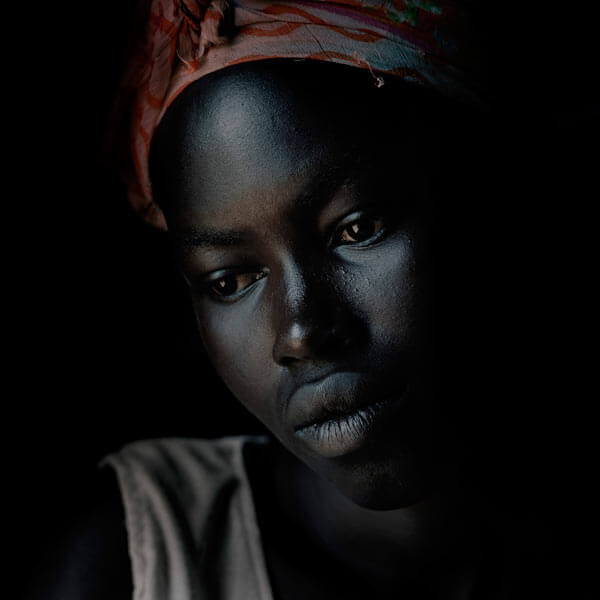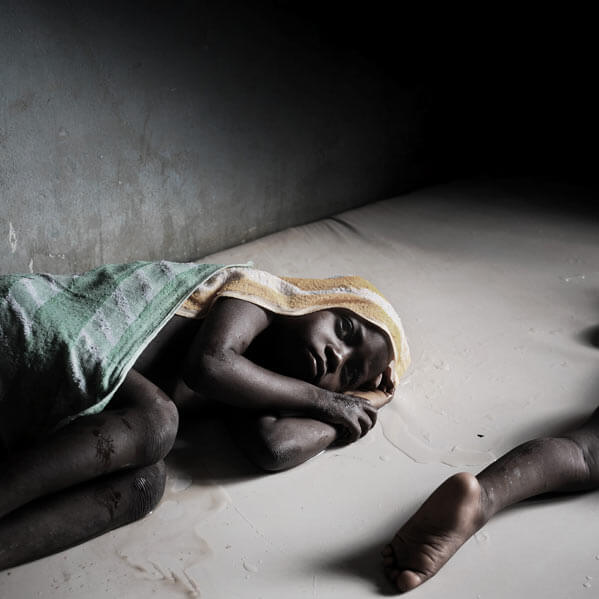By Allison Plitt
Jackson Heights photographer Adam Nadel creates stark images of reality that unquestioningly provoke any viewer’s social consciousness. While his subject matter, such as war, disease, poverty and environmentalism, is complicated, his photos give the impression of purity with the faintest hint of a shadow or an inconspicuous setting in the background.
Born in California, Nadel grew up in a small town in Connecticut. He became interested in photography when the principal of his elementary school taught him how to print and develop photos. Although his grandfather was an avid amateur photographer, Nadel considers himself a self-taught photographer.
After graduating from the University of Chicago in 1990 with a degree in anthropology, he decided to try to pursue a career in photography for a decade. At the time, he received editorial assignments from magazines and newspapers all over the globe such as Time magazine, the British newspaper The Sunday Telegraph and the German magazine Stern.
Nadel has devoted the last two decades of his life to visiting war-torn, disease-infested and environmentally endangered parts of the world, assembling a portfolio of work that leaves audiences stunned. Some of the places he has traveled through and photographed include Darfur, Rwanda, Iraq, Vietnam and Bosnia.
Having received a series of accolades that easily convinced him to continue his photography career, Nadel creates photos that rarely go unnoticed. His “Three Weeks with the Palestinian People” was the first-place news picture story in the 2002 Pictures of the Year International competition. His “Sierra Leone Amputee Football Team” won World Press Photo’s first prize for sports feature singles. Nadel was also awarded World Press Photo’s first prize in 2005 for his work on Darfur and he was nominated for a Pulitzer Prize by The New York Times for his images from the war in Iraq.
“I spent the last decade photographing in the Middle East. I started thinking a lot about what underlying conditions allow civil unrest to propagate. Economic inequity seems to play a significant role,” Nadel said. “And a lot of that is derivative of poor health infrastructure. Consequently, if you want to generalize, you can associate the high prevalence of disease with unstable societies.”
Due to the increased presence of global online news and the collapse of many newspapers and magazines, Nadel nowadays relies on grants and fellowships to subsidize much of his humanitarian work. In 2010 the Malaria Consortium asked him to create a traveling museum exhibition, leading to 50 of his photos from Nigeria, Uganda, Cambodia and the United States being displayed in an exhibit called “Malaria: Blood, Sweat and Tears.” It opened at the United Nations Headquarters in New York City. Dozens of venues later, the exhibit has been seen by more than 2 million people.
Currently, Nadel is working on what he calls his “vector project.” “A vector-borne disease” is the term used to describe diseases transmitted to people by agents such as mosquitoes and ticks. Using a scanning electron microscope, Nadel is able to photograph many of these insects. While he has museums waiting to display his work, Nadel is trying to negotiate a grant to produce an exhibit of his photos, which he intends to print on 8-foot by 8-foot paper.
“They’re very interesting to look at. An 8-foot bug really catches your attention! Then you can begin to discuss why the insects are interesting not only just to look at but also in terms of global health,” Nadel said. “Vector disease transmission affects everyone from Lyme disease in the United States to dengue fever in much of the Southern Hemisphere. A lot of them are called neglected tropical diseases and they influence our global economies.”
Recently, Nadel received National Science Foundation funding to create an exhibition about the ecological collapse of the Florida Everglades. To shoot the project, he received two other prestigious grants — a Magnum Foundation Emergency Grant and a New York Foundation of the Arts Fellowship.
“The Everglades are dying. No one will disagree with that and no one disagrees with the reason why it’s dying. It’s essentially being denied water. The one catch is, and everyone agrees, that when the Everglades die, it’s going to drastically impact the entire fresh water supply of southern Florida,” Nadel said. “About a third of the state is eventually going to lose much of its fresh water supply. I’m working on how different stakeholders understand and then address the issue of the Everglades’ restoration.”
Nadel hopes his exhibit will have some positive effect on an inevitable environmental tragedy.
For more information about Adam Nadel, you can visit his website at adamnadel.net.







































